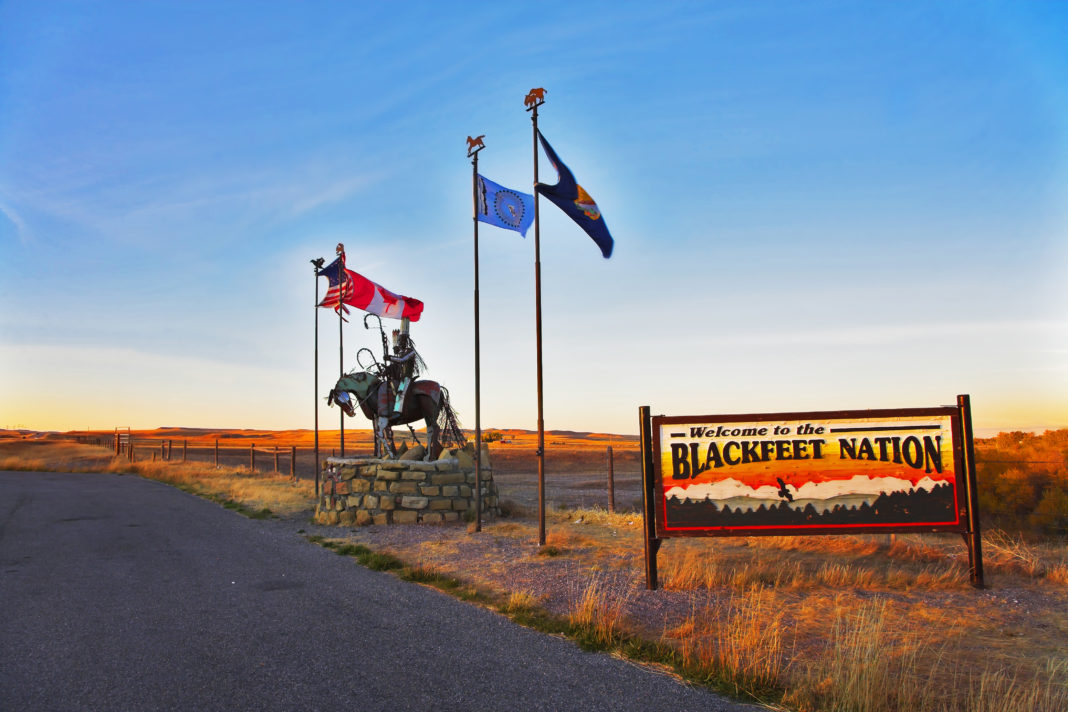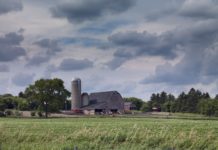[dropcap]R[/dropcap]efusing to accept the trauma, alcoholism, diabetes and mental illness that has hindered generations of Native Americans before them, students at Blackfeet Community College in Montana are searching for answers in the vials of blood, sweat and saliva they have stockpiled in their biomarker lab.
The samples, collected on the Blackfeet Indian Reservation, are part of a research project spearheaded by Neha John-Anderson, Ph.D., who works in the Department of Psychology at Montana State University (MSU). Her co-researcher, Agnieszka Rynda-Apple, Ph.D., is also a professor at MSU.
The team, flanked by students, is particularly interested in understanding how positive experiences and relationships may grant protection from the negative consequences of trauma or adversity on health.

“While it’s impossible to change the past, there’s always the possibility to make changes in the current environment to bring about positive outcomes,” John-Henderson said. “That potential is what drives my research.”
At the heart of this project are the 17,321 members of the Blackfeet Nation, one of 10 largest tribes in the United States. Located in northwest Montana, it was one of the first tribes in the nation to take control of its health programs after The Indian Health Care Improvement Act, a rider on the Affordable Care Act, permanently authorized the IHS Tribal Self-Governance Program. It allows tribes to take over Indian Health Service operations like diabetes management or ambulance service.
Exposure to adversity and trauma can begin early in life among the American Indian population and persist into adulthood, John-Henderson said. These exposures have important implications for mental and physical health. Little is known about how positive factors in the social environment may affect the degree to which early life adversity negatively impacts health. In other racial/ethnic groups it has been shown that positive factors such as maternal warmth are capable of reducing the negative impact that early life trauma or adversity has on health. More broadly, an example of a positive factor would be a warm family environment or the availability of social support. Based on their discussions with community members, it seemed plausible that connections to the Community could act in a similar way for the Blackfeet community.
The project is aimed at Native Americans taking charge of their health and charting a new path for future generations, one this isn’t plagued by stress, depression and substance abuse. Their ultimate goal is to identify what is causing disease and illness and intervene. The research project is one way in which Montana tribes are leveraging resources and sovereignty to improve the health of their communities and chart their own destinies, John-Henderson said.
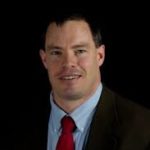
“This is a big, big deal,” said Matt Kuntz, executive director of National Alliance on Mental Illness Montana. “Our native communities have been wracked by trauma for generations. In order to truly learn and recover, it’s important they do their own research instead of relying on somebody else to point the way. Biomarkers are where the diagnosis of mental health is heading. That’s the direction of brain diagnostics. The important thing is that they are doing this. We can’t wait until somebody comes up with the magic potion. This gives me a lot hope for the tools, techniques and insights that they are uncovering.”
Kuntz has testified in Congress on more than one occasion on behalf of Indian Health Services and rural health care services.
Waiting for Congress to reform the Indian Health Service is not an option as lives are at stake. American Indians live almost two decades less than other Montanans, according to the most recent State of the State’s Health report that was compiled by the Department of Public Health and Human Services. White men in Montana lived 19 years longer than American Indian men, and white women lived 20 years longer than American Indian women. White women lived seven years longer than White men, and American Indian women lived six years longer than American Indian men.
“This is my first time working with Native communities,” John-Henderson said. “This work is all new for me. Before here, I was working inner city, predominantly African-American, individuals in Pittsburgh. The theme that’s gone through most of my work is resilience. So, when I first came here in fall of 2016, I had the opportunity to go off with some colleagues to Blackfeet Nation and meet with students at Blackfeet Community College. I was just really taken aback by resilience and the stories that they all tell and the tremendous adversities that they face, and in spite of that they have this unrelenting commitment to keep moving forward.”
Students at Blackfeet Community College were particularly interested in the connection, very broadly, between stress and health. They wanted to pick John-Henderson’s brain about the ways that stress can be measured and look at health outcomes.
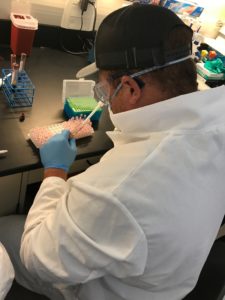
Jerry Racine, a student researcher, said, “I have enjoyed having the opportunity to work on research that I believe can really make a difference in Indian country. I have learned about different biomarkers of the immune system and how they relate to stress levels. These biomarkers provide a physiological measure of stress levels in our community. We collect salivary and blood samples and do the analysis ourselves. Over the past few years, we have collected data and the findings have the potential to make a difference in our community and for Indian country. We hope that our work will be published so that we can help address the stress and health problems our community faces. This will open many other doors for Blackfeet Community College to make a direct impact on the Blackfeet Nation.
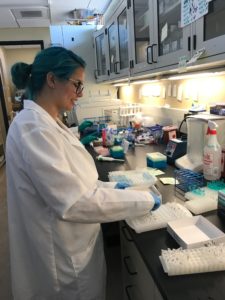
Megan Gordon initially signed on for the research project because she said she needed a job. But after working on it for almost a year it’s become much more, she said. “It’s helped shape my future education and career goals when before I wasn’t always sure what I wanted to do. (While) doing this research on stress levels and resiliency in our community, I have seen a correlation between a higher sense of belonging to the community and a lower stress level. I want to see this work continue and make a difference for the people. It would be amazing to see this research bring about more facilities in town for kids and adults to reduce stress and have something to do with their free time that also contributes to their physical health.”
They have a lab where students have been trained to do all of their own biological analyses, looking at markers that connect to physical health. They were generally asking about stress, but they wanted to have a more developed questionnaire, so John-Henderson and her colleagues developed a survey with the students to examine in-depth measures of stress and how a sense of belonging to the community mattered.
In their initial findings, it was the combination of early life trauma and a weak sense of belonging to the community that predicted negative health outcomes. On the other hand, individuals who had a high number of adverse childhood experiences who felt a strong connection to their community had a physiological profile that associates with reduced risk for diseases.
These findings suggest that maintaining a strong connection to the culture and community may be protective with regards to physical health, particularly for individuals who have experienced high levels of trauma in their childhood. Moving forward, Henderson said, we need to understand a few things.
First, what are the ways in which connection to community is fostered? For example, is it about speaking the language, or is it most important to participate in tribal practices and community events? Secondly, how does a sense of belonging impact health behaviors in ways that could be protective? Do individuals who feel a strong connection to their community have more positive social interactions? Do they feel less lonely? Do they sleep better? Are their eating habits more consistent with the traditional diet?
“That’s what I’m working on right now,” John-Henderson said. “I’m working with the community advisory board, trying to develop a project where we can really measure all these things and really try to understand better what’s going on.”
Specifically, tribal members who experienced high levels of childhood adversity but who also report high levels of sense of belonging to their community have significantly lower levels of an immune inflammatory marker of cardiovascular disease risk compared to individuals who similarly experienced high levels of childhood adversity but who report low levels of belonging to their community.
“If we can understand these relationships better, then we can design interventions,” John-Henderson said.
Betty Henderson-Matthews is the project leader of the student-led project titled, “Correlation of stress levels and disease susceptibility in the Blackfeet Community.”
“This research is important as it gives the students and community members the opportunity to be involved in research that could directly impact their health,” Matthews said. “The work is done by the community in efforts to advance community health.”
This project will support ongoing secondary data analyses of the existing stress and health dataset and will develop a second phase of the study, which will further explore the predictors of a sense of belonging to the tribal community and how a sense of belonging associates with the biomarkers of disease risk. Specifically, the project pursues three related aims:
- To work with Blackfeet Community College on analyses of the existing stress and health dataset, focusing on relationships between early life experiences, belonging to the tribal community, and health-relevant biomarkers, and to work collaboratively toward presentation and publication of these findings.
- To expand on the findings from the first phase of the Blackfeet Community College study through development of a second phase of the project in partnership with the BCC students. This project will further investigate both predictors of and outcomes associated with a sense of belonging to the Blackfeet tribal community.
- To formulate a Community Advisory Board to develop a proposal for an intervention that would promote positive health outcomes by fostering an increased sense of belonging to the Blackfeet tribal community.
“One of the things that we’re learning is that even from one generation to the next, the narrative changes and the concerns change and the way that they connect with their people changes,” John-Henderson said. “I think what’s gained is that they feel empowered from their initial findings. They feel motivated to move forward and keep designing their own research questions with our guidance. Right now, for example, they’re writing up their first paper for peer review publication, so they feel like they’re partaking in science in a way that they feel like can really give back to their community because from the very first stages and all the way through, it has been driven by the community needs.”
Funding for the research was provided by the Center for American Indian and Rural Health Equity at Montana State University in Bozeman, Mont., the IDeA Networks of Biomedical Research Excellence, a program of the National Institutes of Health, and the American Indian/Alaska Native Clinical and Translational Research Program.


